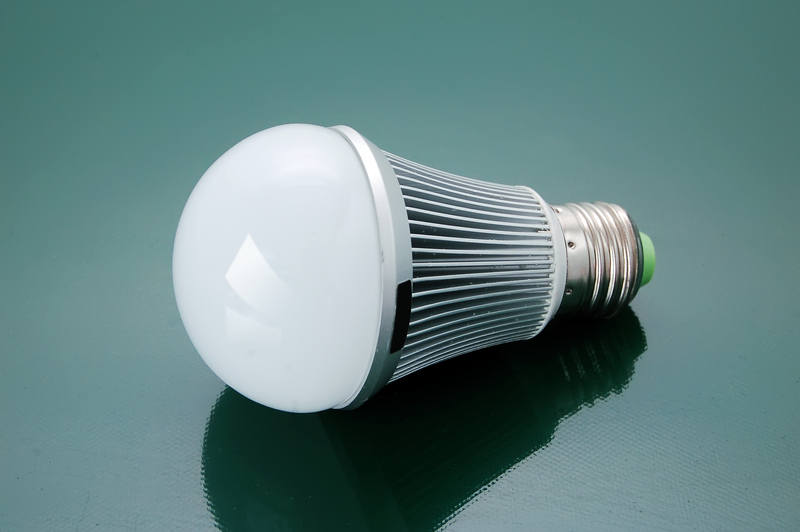In recent years, LED has exploded in popularity due to the many benefits and different types of LED light bulbs in 2024. Many consumers and small business owners have replaced incandescent bulbs with LED bulbs due to their longevity, durability, and savings. There have also been a lot of misconceptions about LED bulbs. Some complaints have been that they’re too bright, expensive, or have off-putting colors. The truth is that LED bulbs for your home are perfectly fine and save you money over time.
That’s why we made this bulb guide! We are going to help you pick out the perfect LED light bulb for your home or small business.
Here at The Energy Professor, we want to give you the information you need to not only save money on your energy bill, but to also become more energy efficient. We hope you find this post helpful and makes it easier for you to know about LED light bulbs, keep reading? Be sure to also check out our one-of-a-kind energy savings calculator!
The Energy Professor Electricity Rate Check Tool
How to Choose an LED Light Bulb 2024
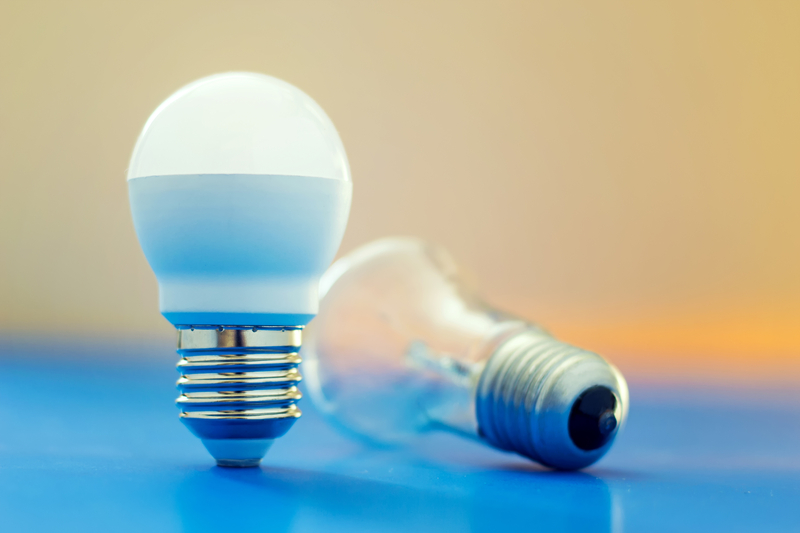
Before we delve into determining the best types of LED light bulbs, it is crucial to understand the process of choosing the right bulb for your needs. This involves assessing your home or small business environment. To begin, consider the number of bulbs required to light the space. You might be surprised by the electricity consumed solely by your lighting fixtures. Taking stock of the existing bulbs in your space may reveal the presence of unnoticed LED bulbs, which further adds to the significance of this evaluation. By comprehensively identifying your lighting requirements, you can then proceed to make an informed decision about the most suitable LED light bulbs.
How can you tell if a light bulb is LED?
There are many ways to tell if you have an LED bulb. The most common way is to check the base of your light bulb. If it has a code that starts with the letter “A.” With other simple observations like wattage, voltage, and the type of base, you can quickly learn what kind of bulb you’re dealing with.
Related Post: Complete Guide to Light Bulb Recycling
How to Choose LED Bulbs 2024 – LED vs Incandescent Bulbs
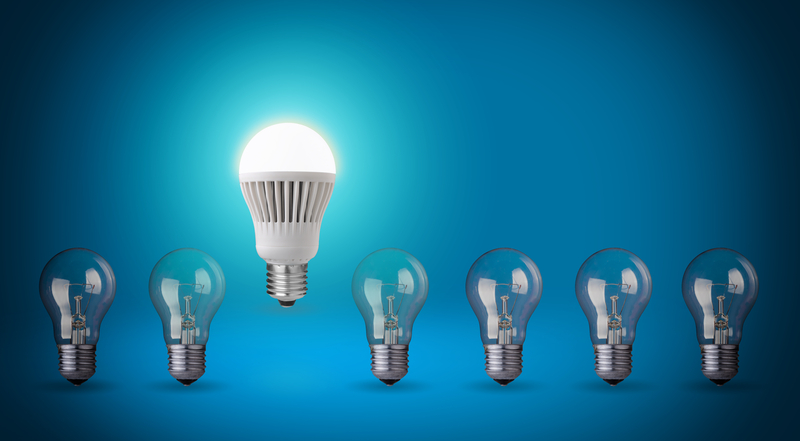
LED bulbs and incandescent bulbs differ significantly in terms of energy efficiency, lifespan, and light quality. LED bulbs are highly energy-efficient, consuming significantly less electricity compared to incandescent bulbs, resulting in lower energy bills and reduced environmental impact. LED bulbs also have a much longer lifespan, lasting up to 25 times longer than incandescent bulbs, which reduces the frequency of replacements. Additionally, LED bulbs provide a more focused and directional light, whereas incandescent bulbs emit a broader spectrum of light with a warmer color temperature.
LED Light Bulb Vs. Incandescent Light Bulb 2024
- Understand Watts From Lumens – Newer LED bulbs are exponentially more efficient, therefore using watts to describe their brightness was no longer accurate. Check the lumens on LEDs when choosing light bulbs for brightness.
- Check For Kelvin Measurements – Kelvin (K) is the primary unit of measurement for thermodynamic temperature.
- Double Check Light Bulb Labels – Once you understand how to, reading light bulb labels can help you determine if you have an LED bulb or an incandescent bulb.
When comparing your old light bulbs to an LED replacement, you might be confused that terms have changed. For older, more traditional incandescent bulbs, terms like wattage were used to tell you how bright a light may be. When looking for an LED bulb watt list, you might be confused when you see the term lumens (lm) instead of watts. Newer LED bulbs are exponentially more efficient, therefore using watts to describe their brightness was no longer accurate. Check the lumens on LEDs when choosing light bulbs for brightness.
The brightest LED bulb for home use is the Philips 5000 lumen LED light bulb.
Related post: What Uses the Most Electricity in a House?
What Kind of LED Do You Need? – LED Lighting Color Types
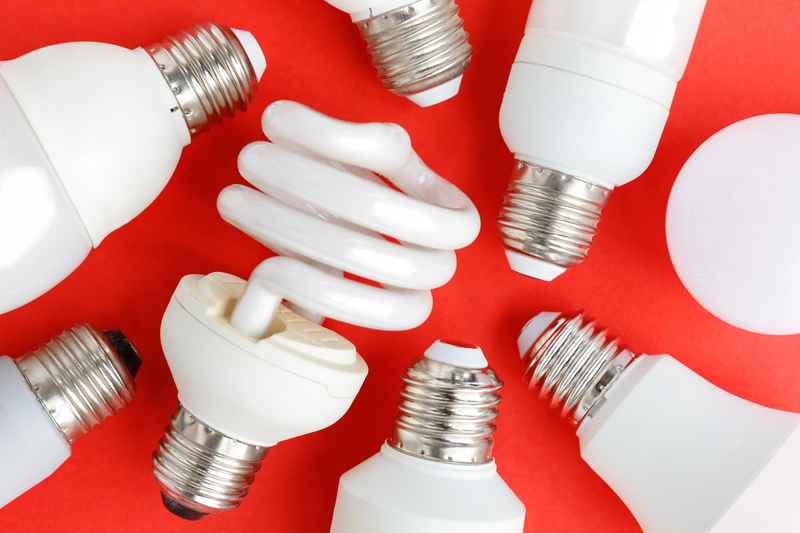
LED light bulbs have the capability of having many different colors and moods, which can light up spaces like never before.
The Kelvin (K) scale is used to measure the color temperature of light emitted by LED bulbs, and it plays a significant role in determining the ambiance and mood created by your lighting. Understanding how Kelvin impacts your LED bulb choice is crucial for achieving the desired lighting effect in different areas of your home or business.
Lower Kelvin values, such as 2700K to 3000K, produce a warm and cozy light similar to traditional incandescent bulbs, creating a comfortable and relaxed atmosphere in living rooms, bedrooms, and dining areas.
On the other hand, higher Kelvin values, such as 4000K to 6500K, produce a cooler and more energizing light, often referred to as daylight or cool white. This range is suitable for task-oriented areas like kitchens, offices, and workspaces, where bright and focused illumination is needed.
What do Kelvins Measure?
- While lumens measure brightness, Kelvin measures what LED lights look like. Low Kelvin scale measurements have a warmer tone, and higher, strong LED light bulbs have a blue, cool Kelvin scale tone.
Low Kelvin scale measurements have a warmer tone, and higher, strong LED light bulbs have a blue, cool Kelvin scale tone. When choosing LED light bulbs for home use, you will want to use a variety of Kelvin measurements to have the mood-setting appropriate for each room. Lower Kelvin measurements in the mid 2500’s are more suitable for bedrooms, while more neutral colors around 3500 Kelvin can be used in any space. If you’re looking for brighter strong LED lamp bulbs for workshops, look for a Kelvin measurement over 6000.
Related Post: How to Calculate Your Electricity Cost
How to Read LED Bulb Labels
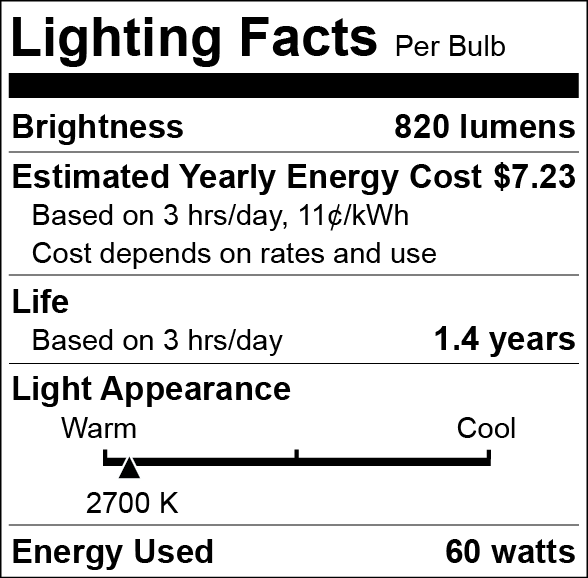
If any of these numbers seem confusing, LED light bulb producers make it relatively simple to understand light bulb labels. This Lighting Facts label is on every single LED light bulb package and can help you understand the figures we discussed above. You can use these labels as a home light bulb guide when you’re making decisions on which bulbs to purchase.
Related Post: How to Find Out Who Provides Your Electricity
How Long Do LED Lamp Light Bulbs Last 2024?
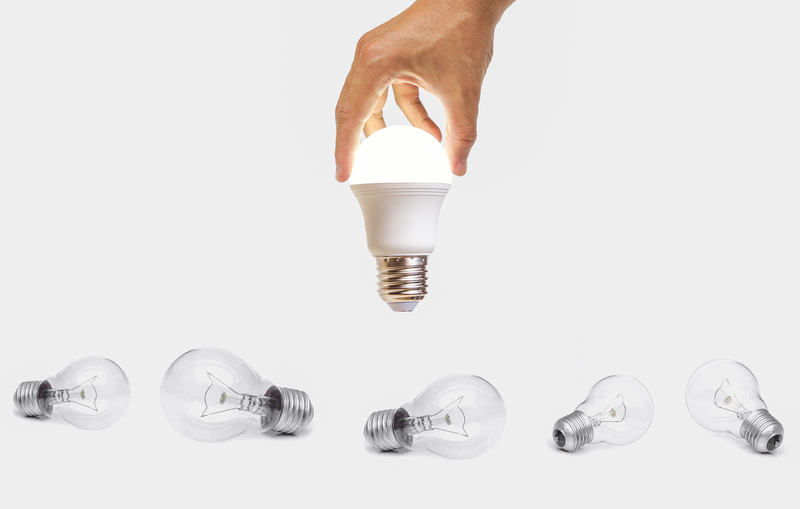
The great news is most consumers are delighted when they find out the lifetime of an LED light bulb. When learning about LED light bulbs, the most important thing is that they don’t burn out! One of the reasons why people save money is because of how long LED bulbs last.
How Long do LED Light Bulbs Last?
- 100,000 hours or 20 years of average use!
On average, LED bulbs can last up to 100,000 hours of use. That’s almost 20 years of usage! One thing to consider is that exposure to extreme weather such as heat may reduce the lifetime of the bulb. Another great thing about LEDs is that instead of burning out, LED light bulbs gradually dim over time. That could be 25 times longer than traditional incandescent bulbs, which only last about 1000 hours. Your LED light bulb could potentially last for 20 years.
Related Post: Why is My Electric Bill So High?
Using LED Light Bulbs in Your Home 2024
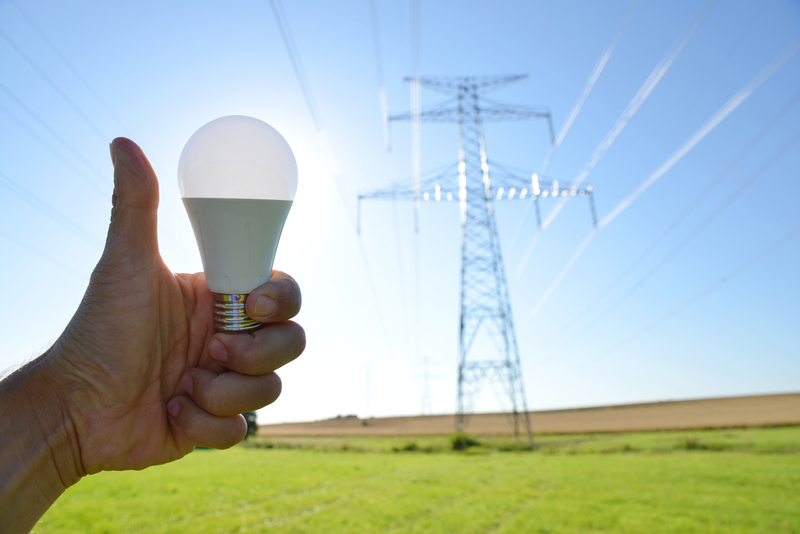
When deciding what kind of LED lights are best, it is important to know that not all LEDs are compatible with certain features in your home. If you have enclosed fixtures or dimmer switches, research what LED light bulb is best. There may be special bulbs that are required to operate them.
Are LED Light Bulbs Suitable for Enclosed Fixtures?
LED light bulbs are generally suitable for enclosed fixtures, but it’s important to choose LED bulbs specifically designed for such applications. Enclosed fixtures include light fixtures with limited airflow or sealed openings, such as recessed cans, globes, and some outdoor fixtures.
The difference between LED bulbs and incandescent bulbs is huge when it comes to how much light versus how much heat they give off. LED light bulbs for enclosed fixtures do not work out well because of how sensitive the bulbs are to heat. Only 5% of LED light is wasted as heat, therefore LED light bulbs for fully enclosed fixtures are not recommended.
Instead of using LED light bulbs for enclosed ceiling fixtures, try replacing only bulbs in semi-enclosed fixtures. If there is no other way to have a different bulb in your fixture, there are LED lights for enclosed fixtures. Please note that there are many different bulbs for enclosed ceiling fixtures and it is important to research them before installing.
LED’s and Dimmer Switches
Another big difference to note when you change your older bulbs to LED bulbs is that not all LEDs and dimmer switches are compatible. When looking at what LED lights you should get, you may have to consider changing out outdated dimmer switches. Otherwise, your selection of types of LED light bulbs you can use may lower significantly with an older dimmer.
Related Post: Should You Recycle Your Light Bulbs?
What are the Best LED Bulb Benefits?
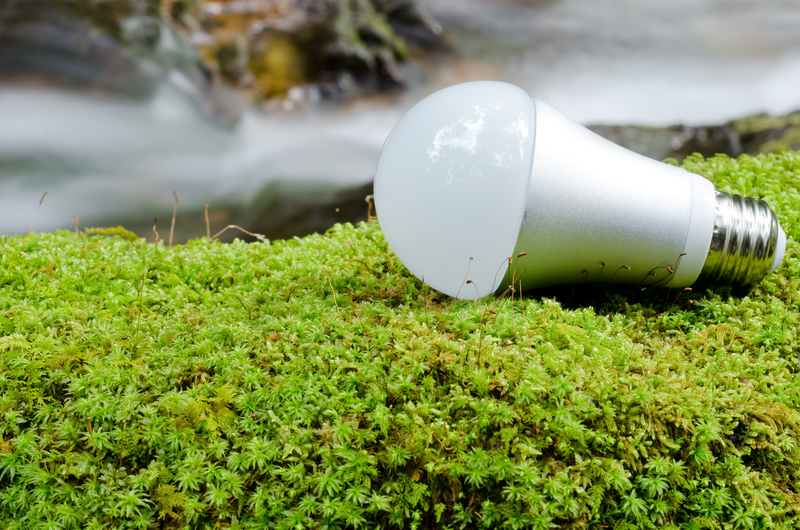
While LED light bulbs are one of the most expensive lightbulbs you can buy, they can and will save you money over time. LED bulbs can also reduce your impact on the environment with newer and more efficient technology.
What are the benefits of LED light bulbs?
-
- Long lifespan: Certain types of LED light bulbs can last up to 25,000 hours, which can translate to as much as 20 years without needing replacement.
- Energy efficiency: Energy Star-certified LED light bulbs have been rated to be approximately 90% more efficient than incandescent bulbs. This high-efficiency results in significant energy savings and reduced electricity costs.
- Reduced cooling costs: LED bulbs generate minimal heat compared to traditional bulbs, which means they do not contribute significantly to increasing the internal temperature of rooms. This can help cut air conditioning costs, especially in warmer climates.
- Incentives for commercial customers: Various commercial customers can be eligible for incentives or rebates when they switch to more energy-efficient LED bulbs. These incentives aim to encourage the adoption of environmentally friendly lighting options.
- Lower electricity consumption: LED bulbs consume significantly less electricity compared to other types of bulbs. They typically use between 2-17 watts, which results in reduced energy consumption and lower monthly electric bills.
While LED bulbs may have a higher upfront cost compared to other bulbs, the long lifespan, energy efficiency, and potential incentives make them financially beneficial in the long run.
What are LED Light Bulb Environmental Benefits?
Over time, doing little things like replacing outdated incandescent bulbs can make an impact toward a healthier environment. Here are a few facts about the environmental friendliness of LED light bulbs.
- Using energy-efficient lighting can help reduce overall CO2 emissions and reduce sulfur oxide and nuclear waste.
- Just one LED light bulb can prevent a half-ton of CO2 from being emitted into the atmosphere over an incandescent light bulb.
Related post: How to Switch Energy Suppliers
What are the Best LED Bulbs for Homes 2024?
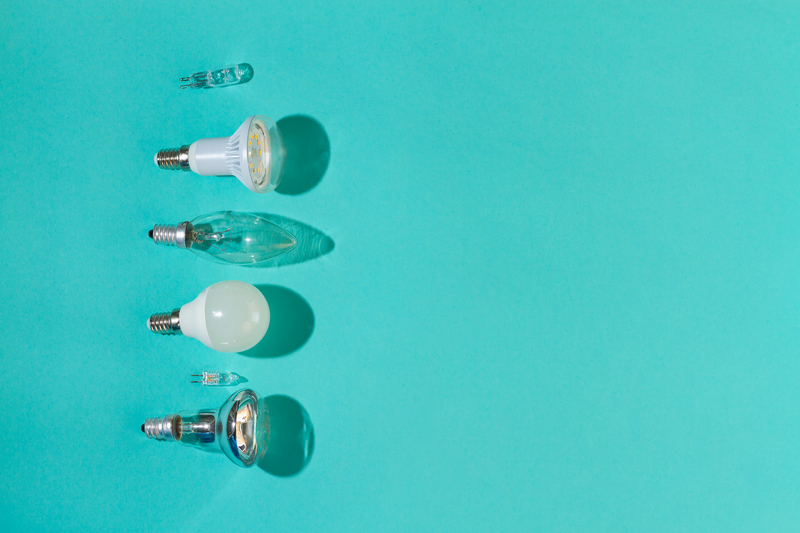
First and foremost, when shopping for LED bulbs, make sure that whatever bulb you choose is Energy Star certified. This will ensure that you are going to receive all of the environmental benefits mentioned above. The Energy Star seal is considered to be credible and unbiased so consumers can make informed choices when purchasing products. In this section, we are going to go over a home light bulb guide, giving you our best suggestions for different rooms in your house.
Types of LED Light Bulbs Selection
We’ve compiled a list of what you’re going to want to choose for LED bulbs in your home. As you can see, for a bedroom, you want your brightness level to be lower than in a bathroom or kitchen. So, by following our LED bulb home guide, you can pick the right bulbs for your space!
Types of LED Bulbs for a Bedroom:
- Bedroom Brightness Level – 1,500 to 4,000 Lumens
- Color Temperature: 2700-3000K
Types of LED Bulbs for a Living Room:
- Living Room Brightness Level – 1,500 to 3,000 Lumens
- Color Temperature: 2200-3000K
Types of LED Bulbs for Bathroom or Kitchen:
- Brightness Level – 4,000 to 8,000 Lumens
- Temperature: 2700-5000K
Related post: Guide on How to Change Name on Electric Bill
What is the Brightest LED Light Bulb?
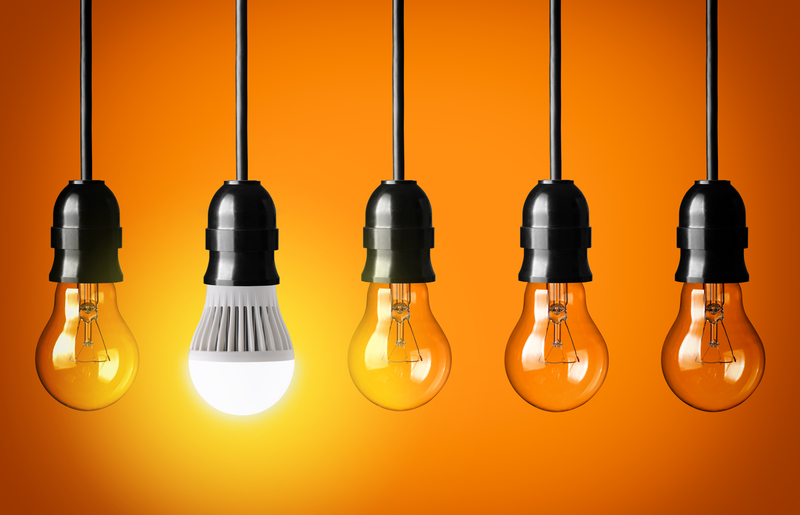
If you have rooms with high ceilings or recessed lighting, you’ll want to prioritize brightness over softness in your light bulbs. After all, the higher your light bulbs are, the brighter they’ll need to be to light up the room. So you may be wondering, what is the brightest LED bulb?
The brightest LED light bulbs for the home are Philips 5000 Lumen LED Bulb. It uses 43 Watts and it has a 5000K color temperature (daylight white). A warm white LED bulb for interiors is The SANSI 27W A21 Dimmable LED Light Bulb. This is the brightest LED bulb but it may be too big for certain fixtures, The Philips 100w Equivalent LED Bulb is another standard-size household bulb available. It uses 18 watts of power to produce 1620 lumens of warm white light. This is the brightest standard-size light bulb.
Related post: What is a Power Surge?
Types of LED Bulbs FAQ

Q: Which LED Bulbs are Most Like Incandescent?
A: Softer and warmer LEDs will give off the same lighting effect as an incandescent.
Q: Are There Vibration Resistant LED Light Bulbs?
A: Since LED bulbs do not have filaments like incandescent bulbs, they are more durable. Therefore, vibration will not cause an LED to blow, but could speed up lumen degradation.
Q: How Can You Tell if a Light Bulb is LED?
A: There are a variety of ways to tell if you have an LED bulb or not. The most common way is to check the base of your light bulb. If it has a number that starts with the letter “A”, then it is an LED light bulb.
Q: What is the Difference Between Watts and Lumens?
A: For older, more traditional incandescent bulbs, terms like wattage was used to tell you how bright a light may be. When looking for an LED bulb watt list, you might be confused when you see the term lumens (lm) instead of watts. Newer LED bulbs are exponentially more efficient, therefore using watts to describe their brightness was no longer accurate. Check the lumens on LEDs when choosing light bulbs for brightness.
Q: What do Kelvins Measure?
A: While lumens measure brightness but Kelvin measures what do LED lights look like. Low Kelvin scale measurements have a warmer tone, and higher, strong led light bulbs have a blue, cool Kelvin scale tone.
Q: How Long do LED Light Bulbs Last?
A: On average, LED bulbs can last up to 100,000 hours of use. That’s almost 20 years of usage! Some things to consider is that exposure to extreme weather such as heat may reduce the lifetime of the bulb. Another great thing about LED’s is that instead of burning out, LED light bulbs gradually dim overtime.
Q: What is the brightest LED bulb?
A: The brightest LED light bulbs for the home are Philips 5000 Lumen LED Bulb.
Do you Need Cheaper Electricity?
If you’ve taken the time to understand the information on your bill and discovered you’re paying more than you’d like for your electricity, have you looked around for a cheaper deal? The Energy Professor has a wealth of information on ways to save on your utilities, including details of top deals that could significantly reduce your monthly or quarterly electricity bills.
We hope you found this article helpful! If you are looking for ways to increase the energy efficiency and sustainability in your home be sure to take a look at all of the latest renewable energy options in your area. The Energy Professor helps residential and small business owners find qualified energy suppliers in New York, New Jersey, Pennsylvania, Texas, Ohio, Maryland, Illinois, and Massachusetts

